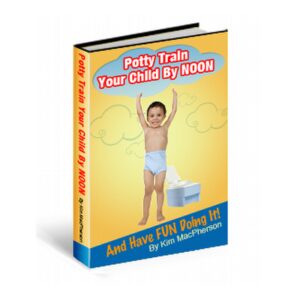Discover the milestones and challenges of potty training. Learn expert insights on at what age are kids potty trained, FAQs, and valuable tips for a successful journey
Potty Training 101: Understanding When Your Child Is Ready
Potty training marks an exciting yet daunting milestone in any child’s development, making the process both exciting and daunting for both parent and child alike. Learning to use the toilet on one’s own not only builds self-esteem but is also essential for independence and independence in later years. However, potty training may become overwhelming for parents who are uncertain where or how to begin this journey successfully.
Key Takeaways
Look for signs that your child is ready for potty training, such as showing interest in the bathroom or being able to communicate their needs clearly. Next, select an effective potty training method suited for both your family and child’s personality – perhaps using rewards or taking a more gradual approach.
Set realistic expectations when setting out on your journey of potty training. Accidents will happen and progress may take longer than you would like it to. Establish a consistent potty training schedule and celebrate each success by offering positive reinforcement and praise.
Be prepared for setbacks and common obstacles such as resistance or regression by having strategies in place to overcome them.
Understanding Potty Training Fundamentals
Potty training refers to teaching a child how to use the toilet instead of diapers or pull-ups as an essential developmental milestone, typically between ages 2 and 3. Potty training helps children gain control over their bodily functions while encouraging healthy habits as well as preparing them for preschool/daycare settings where diaper changes may not always be available.
There are multiple approaches to potty training, each of which has their own set of advantages and disadvantages. One popular strategy known as the 3-day method involves setting aside three consecutive days exclusively to potty training without diapers. This approach seeks to introduce children rapidly into toilet usage; however, parents need to provide intense focus during those three days in order for it to work efficiently.
Gradual potty training may also provide flexibility, with small steps gradually introduced until your child feels comfortable using the toilet independently. While this method allows more freedom for your child, it may take longer for him or her to fully transition out of diapers.
Signs Your Child Is Ready for Potty Training
Recognizing when your child is ready for potty training is vital in making their transition easier from diapers to using the toilet independently. Physical signs include consistent and predictable bowel movements at predictable times, staying dry during nap times or waking up with dry diapers on most mornings, showing an interest in other’s bathroom habits, or seeking privacy while going themselves.
Behavior indicators to look out for during potty training include discomfort when wearing a dirty diaper, curiosity about toilet or bathroom usage or increased independence aspirations. It is crucial that parents wait until these signs have emerged before beginning potty training to avoid unnecessary frustration and setbacks.
Preparing Your Child for Potty Training
Metrics Values
Age at which to begin potty training should range between 18-24 months
Remind child to use potty every 1-2 hours Duration of potty training for 3-6 months Number of accidents per day during training Its
Reward for successful potty use Praise and positive reinforcement to encourage potty training Punishments should never be given for accidents as this can hinder progress.
Introduction of potty training to your child is an important first step towards preparing them for this new experience. One effective way is reading books together about potty training; many children’s books available detail the process in an engaging and exciting manner, helping children understand what’s involved and what lies ahead.
Allowing your child to see you or older siblings use the toilet can help familiarize them with its use and make it less daunting. Engage in open discussions regarding bathroom use, while patiently answering any queries that arise.
Selecting an Appropriate Potty Training Method
When selecting a potty training method, it’s essential to keep in mind your child’s individual personality and temperament as well as family dynamics. The “3-Day Method” may work well if you can dedicate some dedicated days solely towards potty training.
If you prefer taking a more gradual and flexible approach to potty training, introducing small steps over time might be more suitable. Remember there’s no single-size-fits-all solution when it comes to potty training methods; what matters is finding what works for both you and your child.
Establishing Realistic Expectations for Potty Training
Setting realistic expectations during potty training can help alleviate both parental stress and pressure on children, and understand that accidents will happen along the way – they’re simply part of learning how to use the toilet independently.
Avoid placing undue pressure on yourself or expecting immediate success from your child; every milestone requires practice and time. Celebrate small victories and progress – even if that means sitting on the potty for just five minutes without seeing results – but remember that each child learns at their own pace.
Potty Training Schedule Creation
Consistency is key when it comes to potty training your child, so creating a consistent schedule helps your child establish his or her own routine and know when it’s time to use the toilet. Begin by taking your child to use the bathroom at regular intervals throughout the day – for instance after meals or before bedtime.
Make your child’s schedule engaging by setting reminders or using visual cues like timers or stickers on a chart to reinforce it and keep them on schedule. Be consistent both in timing and approach for maximum success in reaching their goals.
Acknowledging Your Child’s Progress in Potty Training
Encouragement plays an essential part in motivating your child during potty training. Offer praise and rewards for successful attempts, such as stickers or small treats as forms of positive reinforcement.
Keep a positive outlook, even when accidents do happen; accidents should be seen as part of learning rather than failures. Avoid punishment or shaming as this can create negative associations with using the toilet and delay progress.
How to Address Setbacks in Potty Training
Setbacks during potty training can be unexpected and it is essential to be mentally and emotionally prepared for them. Accidents may even happen after weeks of successful toilet usage during times of increased stress or change, making preparation vital.
When setbacks arise, be patient and provide gentle reminders about using the toilet regularly again. Revisit prior steps if needed but refrain from returning fully to diapers until absolutely necessary; consistency is key in overcoming setbacks successfully.
Tips for Successful Potty Training
Apart from all of the tips listed above, here are other strategies which may aid in successful potty training:
- Make sure your child feels at ease in his/her potty chair or toilet seat insert by offering various designs or colors they find appealing, such as stickers or designs from magazines to make their experience more pleasant. Finally, offer consistent positive reinforcement – whether praise, rewards or both are used – through praise or rewards or any combination thereof.
Encourage your child to wash their hands after using the toilet in order to promote good hygiene practices. Dress them comfortably so they can manage independently, such as pants with elastic waistbands.
Remember to remain consistent and patient throughout the potty training process, providing your child with support and encouragement along the way.
Celebrating Your Child’s Potty Training Success
Celebrating your child’s successes and milestones during potty training is crucial to building their confidence and motivation. Consider creating a reward system where they receive stickers or small treats for every successful attempt at potty training.
Celebrate significant milestones like transitioning from diapers during the day to underwear full-time or remaining dry throughout the night consistently by inviting family or close friends who can share in your excitement and celebrate with you.
Potty Training Challenges and How to Overcome Them
Potty training presents its own set of unique challenges, but with patience and persistence you can successfully navigate them:
Resistance: If your child resists using the toilet altogether, try making bathroom time more enjoyable by incorporating games and songs. When possible, provide choices so they feel in control of their own progress.
Fear: Children may develop toilet phobia due to previous negative experiences or fear of falling in. You can ease these worries by offering reassurance and support while gradually introducing the concept.
Regression: Regression can happen during times of stress or change; if accidents reoccur after successful potty training periods, remain patient and consistent in reminding your child about using the toilet regularly until their confidence returns.
Potty training marks a pivotal moment in any child’s development and it should be treated as such. Though this journey can be daunting at times, you can set them up for success by understanding its basics, recognizing signs of readiness in your child, and providing adequate preparation.
Selecting a potty training method tailored specifically to your child and setting realistic expectations are key components of successful potty training. Sticking to a schedule, encouraging progress with positive reinforcement and rewards, and celebrating successes all are vital parts of potty training success.
Be mindful that setbacks are normal on this journey; remain patient and persistent. With time, effort, and support from parents or caregivers like yourself, your child will master this crucial skill and gain confidence in themselves and their abilities.
Potty Training Potty training refers to teaching children to use the toilet instead of diapers for urination and bowel movements.
When should I begin potty training my child?
Most children should begin potty training between 18-24 months of age; however, each child varies. Look out for signs that indicate they’re ready, such as showing interest in using the toilet or wearing dry diapers for longer.
How can I determine whether my child is ready to undergo potty training?
Signs of readiness include staying dry for at least two hours, showing an interest in using the restroom, following simple instructions with ease and being able to communicate when they have the need to use it.
What are some effective potty training methods?
Common techniques include the “bare bottom” method, in which children wear no pants or underwear to make it easier for them to recognize when they need to go, and “reward” methods in which children receive small rewards when successfully using the toilet.
How can I help my child who resists potty training?
If your child resists potty training, take a break and try again after several weeks. Do not force them to use the toilet; this may only create more anxiety for both of you and make the process harder.
How long should the potty training process typically take?
Potty training may take from several weeks to several months depending on your child’s readiness and the method chosen. Be patient and consistent while acknowledging that accidents may occur as part of this process.


